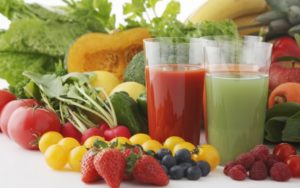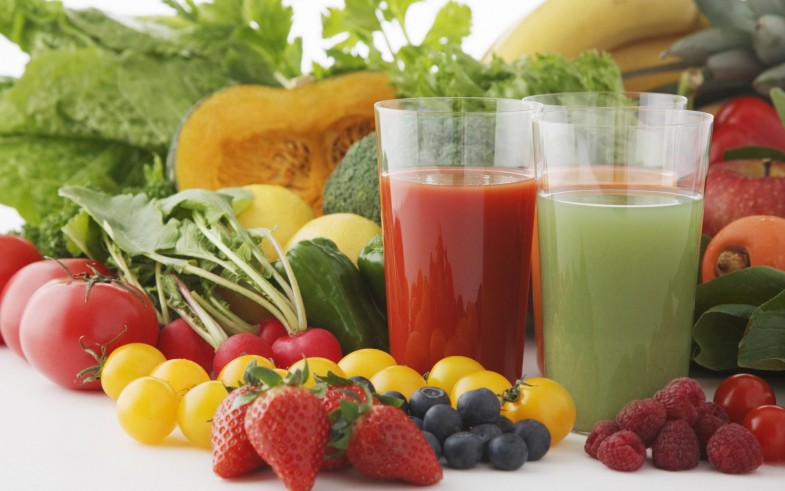
Your throat is itchy…your head hurts…and you have the chills. You have all the tell tale signs. You’re coming down with something.
Every year, adults suffer from an average of two to three colds per year and an estimated five to 20 percent of Americans come down with the flu, typically between the months of October and March.
Did you know that what’s in your kitchen often times works better to treat the flu than all those over the counter medicines? While frequent hand washing, regular exercise and the flu shot are always recommended to fend to keep sickness at bay, you can also give your immune system a boost with items found right in your pantry. “The most authentic way to fight a cold or flu is to eat foods that will help you build the healthy cells you need to feel better,” says Anita Mirchandani, MS, RD, CDN and spokesperson for the New York State Dietetic Association.
Heading to the grocery store soon? Make sure these cold- and flu-fighting foods are on your list.
RELATED: The 6 Supplements You Need to Survive the Holidays
7 Flu Fighting Foods:

Photo and Recipe: Cook The Story
1. Garlic
According to Alissa Rumsey, RD, CDN, CNSC, CSCS and spokesperson for the Academy of Nutrition and Dietetics, it’s allicin, the major active component found in garlic, that’s responsible for its antimicrobial and antibacterial properties, not the smell. “Garlic also helps promote healthy gut flora, which rids the body of toxins, bacteria and viruses,” says Mirchandani. While you could take garlic pills, Rumsey says it’s best to eat the actual thing. “The active components are more bioavailable when you eat real garlic.” Try this simple garlic soup recipe pictured above from Cook the Story next time you feel the flu knocking.

Photo and Recipe: A Beautiful Mess
2. Dark Chocolate
Nutrition experts agree that dark chocolate deserves a place in healthy diets, and a study published in the British Journal of Nutrition says it can boost your immunity, too. High doses of cocoa support T-helper cells, which increase the immune system’s ability to defend against infection. Sweet! Try this dark chocolate hot chocolate recipe (pictured above) from A Beautiful Mess to ward of those chills.

Photo and Recipe: healthline.com
3. Sweet Potato
Sweet potatoes are a great source of Vitamin A, which plays a key role in maintaining the health of your mucosal surfaces. Vitamin A is especially important for areas that go haywire when we catch a cold: It keeps the mucous membranes that line our nose and throat—one of the body’s first lines of defense—healthy and functioning properly. These sweet potato recipes will help you load up on good old vitamin A and satisfy your winter comfort food cravings at the same time!

4. Turmeric
An excellent superfood, turmeric is a rich yellow powder often used in curry dishes. It’s high in antioxidants and considered a natural anti-inflammatory. The lipopolysaccharide in turmeric arms the immune system against germs. It kills bacteria, viruses, and fungi. Order up a curry from your favorite Indian restaurant or use this turmeric supplement for a quick immunity boost.

Photo and Recipe: food52.com
5. Dark Leafy Greens
Most people usually grab some orange juice to get a boost of vitamin C, but dark leafy greens, like spinach, kale, Swiss chard and arugula, are also great sources of the cold-fighting vitamin. According to Rumsey, some research shows that if you consistently take in adequate amounts of Vitamin C, it can reduce the duration of a cold. Try sautéing vegetables and combining them with other healthy spices and foods, such as garlic. When the greens are cooked, they shrink in size and you can consume more of the vegetables than if you were eating them raw. The darker the greens, the higher the nutrient content. Learn how to make a better leafy green salad without a recipe from Food52.

Photo and Recipe: inspiredtaste.net
6. Wild Salmon
Less daylight during cold and fly season means we get less Vitamin D. This nutrient is critical for fending off colds and flu so it’s important to mindful of consuming foods rich in it, like wild salmon. Oily fish—including salmon, tuna, and mackerel — are rich in omega-3 fatty acids, compounds that help reduce harmful inflammation in the body. Chronic inflammation prevents your immune system from working properly, and can contribute to colds and flu as well as more serious diseases. Try this recipe for salmon with lemon and dill for some extra Vitamin D.




